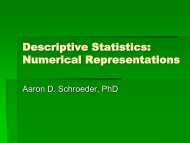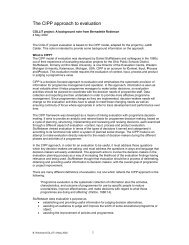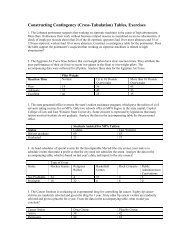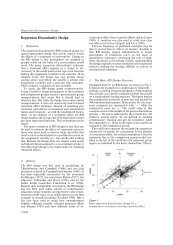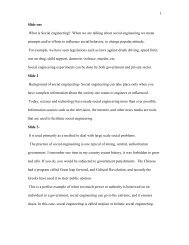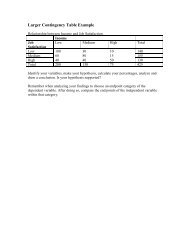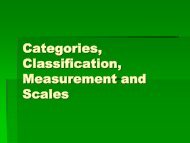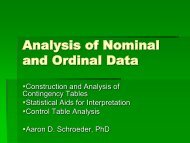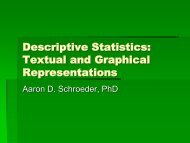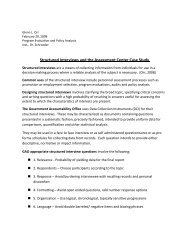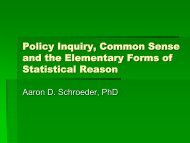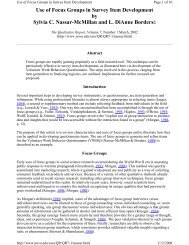The Problem
The Problem
The Problem
You also want an ePaper? Increase the reach of your titles
YUMPU automatically turns print PDFs into web optimized ePapers that Google loves.
while at the same time calling for a central government to “give more attention to the<br />
problems of local actors to provide them with more resources. Governance is seen as an<br />
essentially political process in which local entities barter according to their personal<br />
interests and purposes (8).<br />
What we have come to today, it is argued, is a consideration of policy making taking<br />
place in networks consisting of various actors (individuals, special-interest groups, public<br />
organizations, private organizations, etc.), none of whom have the individual power to<br />
autonomously determine the strategies of all the other actors. Policy processes are not<br />
viewed as the implementation of ex ante formulated goals, but as an interaction process<br />
in which actors exchange information about problems, preferences and means, and trade<br />
off goals and resources.<br />
Figure 1 illustrates conceptually what this means for our purposes with respect to various<br />
implementation strategies and approaches to public policy. Within this figure,<br />
assessment simply means a contextual understanding of the problem at hand. This does<br />
not entail rote problem definition typical of system analysis perspectives, but simply<br />
making an effort to understand the various interests involved and the ways these interests<br />
interact, cooperate or compete for space in the public policy arena. Focusing entails<br />
gaining an understanding of the resources needed for effective implementation.<br />
Model I in Figure 1, which places an emphasis on the implementation phase of a<br />
program, is most adequately typified by Pressman and Wildavsky’s seminal piece on the<br />
subject (1979). However, such an approach is not suitable to the changes currently taking<br />
place in contemporary public policy. Given the shift towards a network setting and the<br />
changing role of administrators as facilitators, a similar shift in methodological<br />
approaches to policy must also take place. Model II, which places a premium upon the<br />
assessment stage as the primary arena for effective implementation, is a more suitable<br />
approach considering what contemporary public administrators face in their working<br />
environments. And without adequate assessment, implementation, as Pressman and<br />
Wildavsky found nearly twenty years ago, ultimately fails.<br />
7



